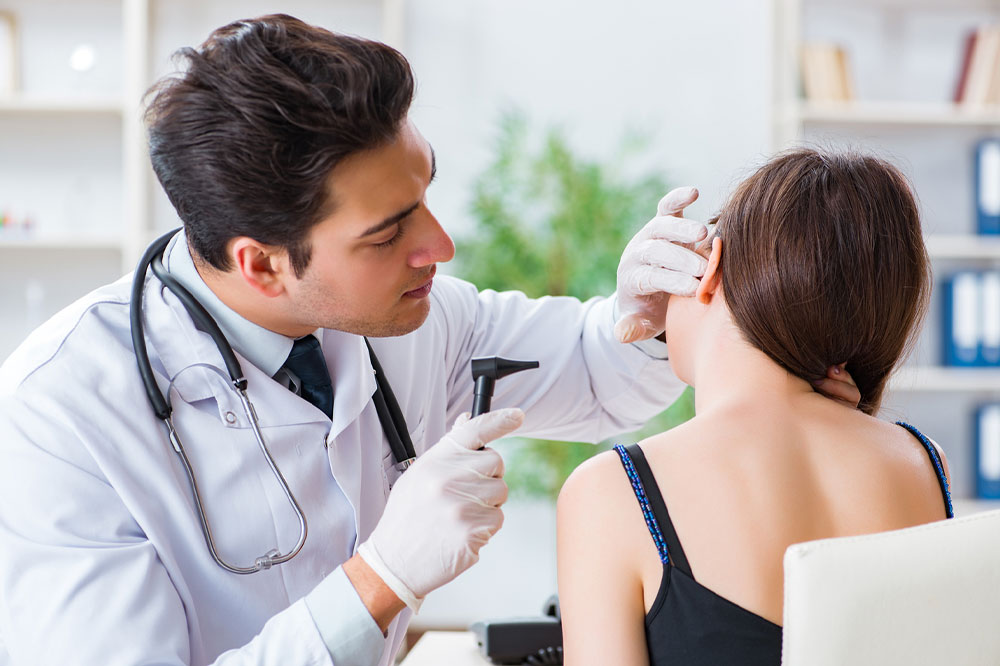10 signs of early-stage hearing loss that shouldn’t be ignored

Hearing is a vital sense that connects one to the world around. Yet, hearing loss is a prevalent but often underestimated issue that can significantly impact one’s life. It is crucial to recognize the early signs of hearing loss to seek timely intervention and maintain a high quality of life. This article provides an insight into the subtle indicators of hearing loss and the importance of early detection and management.
Difficulty understanding speech in noisy environments
One of the earliest signs of hearing loss is struggling to comprehend conversations in noisy settings, such as restaurants, parties, or busy streets. Background noise can make it challenging to distinguish and interpret words, leaving individuals feeling isolated and frustrated.
Frequent requests for repetition
Repeated requests for clarification indicate that one may not be hearing as clearly as one should be. One can ask for things to be said more loudly, more slowly, more clearly, and so on. Friends and family may also notice this behavior early on.
Increased volume on devices
Another common sign is the need to increase the volume on one’s television, radio, or smartphone to levels that others find uncomfortably loud. If one frequently hears complaints about the volume setting, it might be a hint that one’s hearing is not what it used to be.
Struggling with high-pitched sounds
Hearing loss often starts by affecting high-frequency sounds. As a result, one might have difficulty hearing high-pitched sounds like birdsong, doorbells, or the chirping of an alarm clock. Missing these sounds can disrupt one’s daily routine and impact safety.
Ringing or buzzing in the ears (Tinnitus)
Tinnitus, the perception of a ringing or buzzing sound in the ears, often accompanies hearing loss. While not exclusive to hearing loss, tinnitus can be a red flag. If one experiences persistent tinnitus, it is essential to discuss it with a healthcare professional.
Sounds becoming muffled or distorted
Individuals with hearing loss might notice that sounds seem muffled or distorted. This distortion can make it challenging to understand speech, enjoy music, or engage fully in conversations.
Avoidance of social situations
Hearing loss can lead to social withdrawal as individuals may find it challenging to participate in conversations and engage with others. Avoiding social situations can lead to feelings of isolation and loneliness.
Fatigue and stress after social interactions
Straining to hear and follow conversations can be mentally and physically exhausting. After social gatherings or lengthy interactions, individuals with hearing loss may feel unusually tired and stressed. This fatigue can affect overall well-being.
Misunderstanding words or Responding inappropriately
Hearing loss can result in mishearing words or responding inappropriately to questions or comments. This can lead to misunderstandings and potentially embarrassing situations.
Concerns voiced by loved ones
Often, friends and family are the first to notice a loved one’s hearing difficulties. They may observe the individual struggling to follow conversations or reacting to sounds differently than before. If multiple people express concern, it is essential to take their observations seriously.
Patients with hearing loss can benefit from a meal plan rich in nutrients that support overall ear and auditory health. Some foods that can be particularly helpful include those high in antioxidants like vitamin C and E, such as citrus fruits, strawberries, and almonds. Omega-3 fatty acids found in fatty fish like salmon and mackerel may reduce the risk of age-related hearing loss. Magnesium-rich foods like spinach and bananas can also support ear health by improving blood circulation to the inner ear. Incorporating these foods into one’s meal plan may contribute to better hearing health for those with hearing loss.
Hearing loss, though often gradual and subtle, can have a profound impact on one’s life. Recognizing the signs early is crucial to maintaining communication, social engagement, and overall well-being. From struggling with noisy environments to requesting repetition and experiencing tinnitus, these indicators should not be ignored. Seeking a hearing evaluation and professional guidance can open doors to effective interventions, such as hearing aids, assistive devices, and communication strategies, ultimately preserving the joy of hearing in the years to come. Addressing hearing loss proactively is essential to ensure a more vibrant and connected life.
Certain basic strategies like using hearing aids, seeking timely professional help, using assistive learning devices and visual cues, joining support groups, and building a social network can help one manage symptoms and lead a fruitful life. Friends, family members, colleagues, etc., can help people with hearing difficulties establish a healthy ecosystem to seek assistance wherever required and ensure physical and mental well-being.



